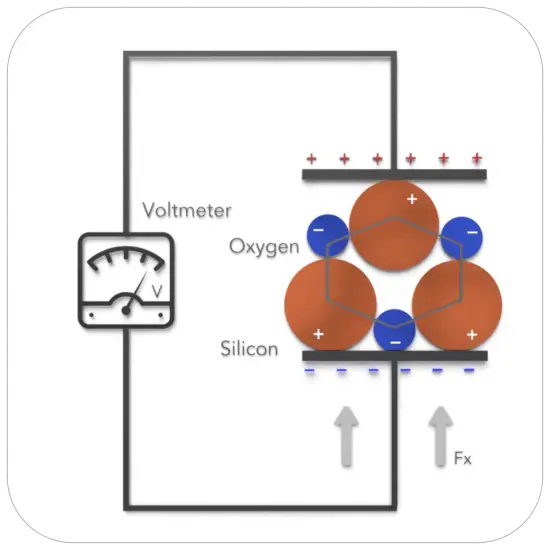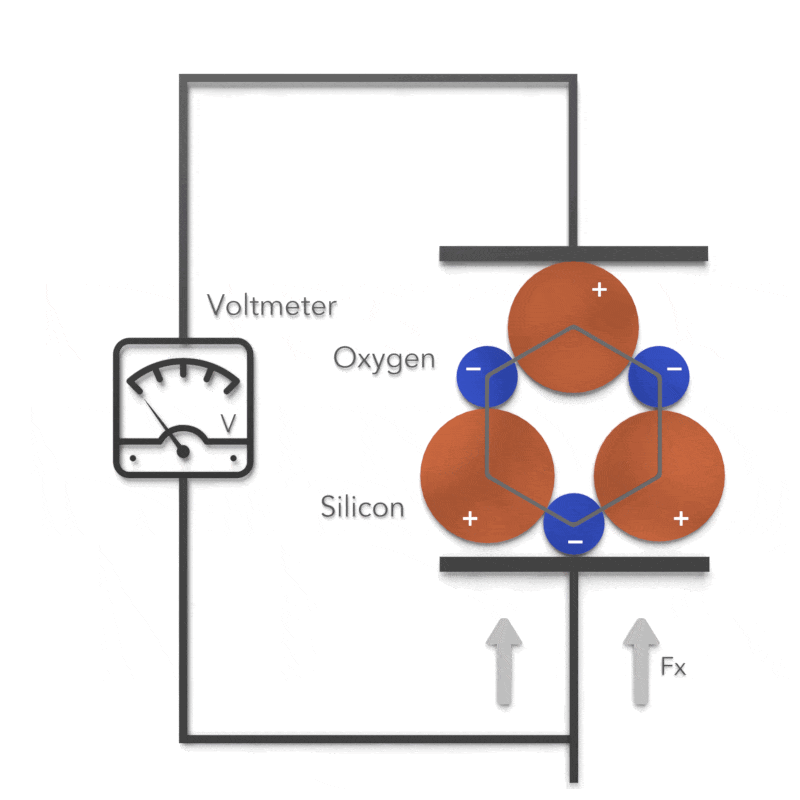30-second summary
Piezoelectricity
Piezoelectricity is an electric charge generated by applying pressure to certain crystals (such as quartz or Rochelle salts) or certain ceramics (like barium titanate).
Piezoelectric effect is the ability of certain materials to generate an electric charge in response to applied mechanical stress.
In such materials, electrons can be driven out of orbit in the direction of the force. Electrons leave one side of the material and accumulate on the other side, building up positive and negative charges on opposite sides.

Piezoelectricity
Piezoelectricity is generated by applying pressure to certain crystals (such as quartz or Rochelle salts) or certain ceramics (like barium titanate).
In such materials, electrons can be driven out of orbit in the direction of the force. Electrons leave one side of the material and accumulate on the other side, building up positive and negative charges on opposite sides. When the pressure is released, the electrons return to their orbits. Some materials will react to bending pressure, while others will respond to twisting pressure. This generation of voltage is known as the piezoelectric effect.

Piezoelectric materials have two main functions:
- From strain to electricity. The first function is the direct piezoelectric effect, which is the transformation of mechanical strain into electrical charge. For example, a 1 cm3 cube of quartz with 2 kN of correctly applied force can produce a voltage of 12500 V.
- From electricity to strain. The second function, called the converse piezoelectric effect, takes an applied electrical potential and converts it to mechanical strain. Therefore, an electric field can be applied to induce an expansion or contraction of the material and vice versa.
For example, lead zirconate titanate crystals will generate measurable piezoelectricity when their static structure is deformed by about 0.1% of the original dimension. Conversely, those same crystals will change about 0.1% of their static dimension when an external electric field is applied. The inverse piezoelectric effect is used in the production of ultrasound waves.
The best-known application is the electric cigarette lighter: pressing the button causes a spring-loaded hammer to hit a piezoelectric crystal, producing a sufficiently high-voltage electric current that flows across a small spark gap, thus heating and igniting the gas.


